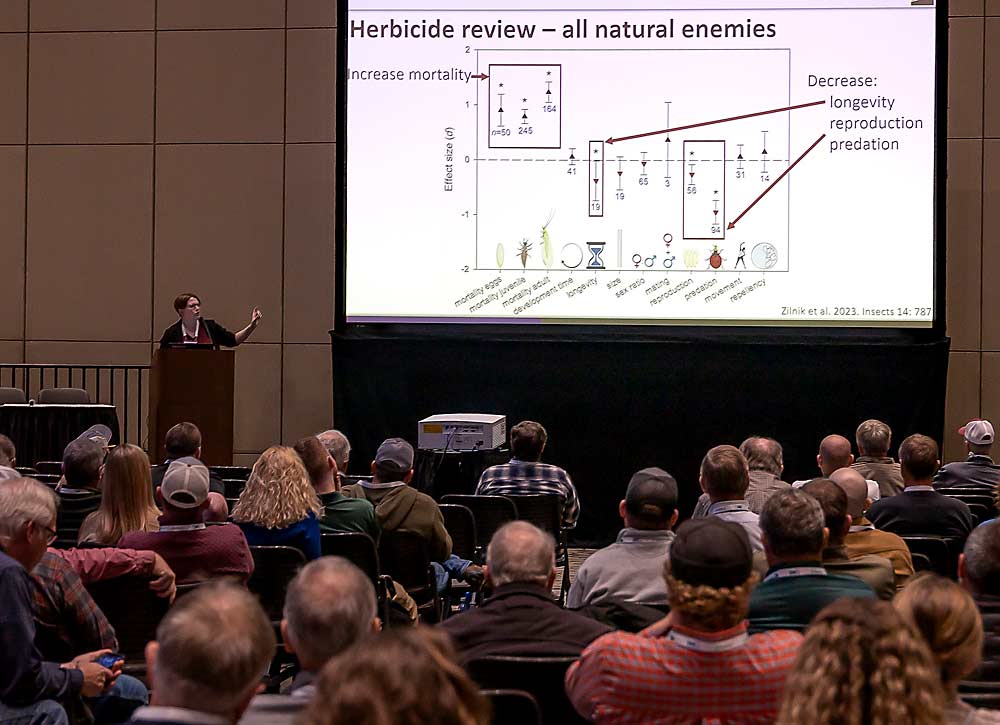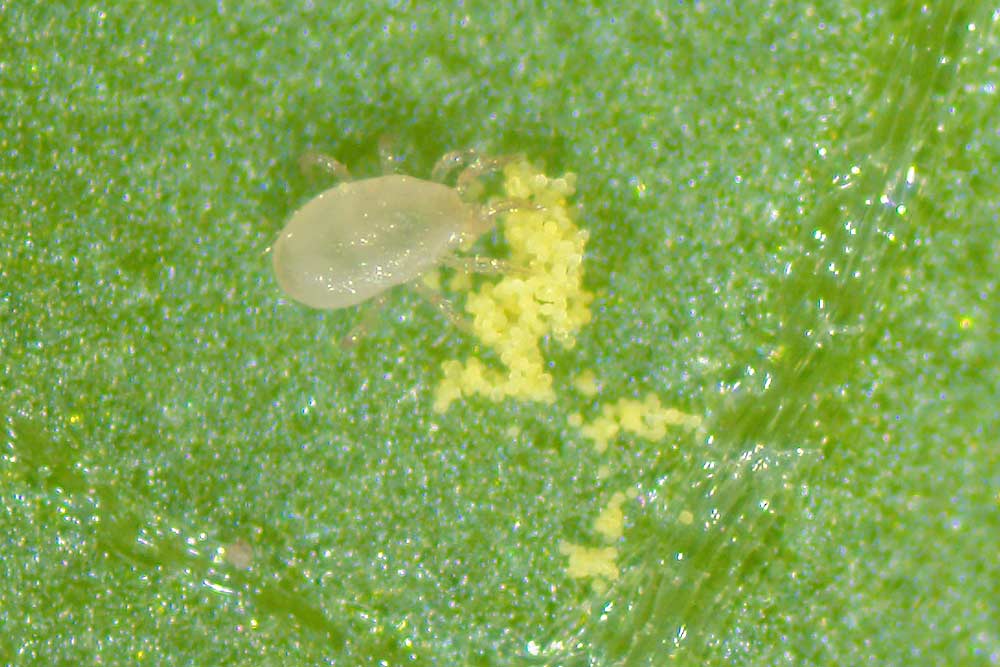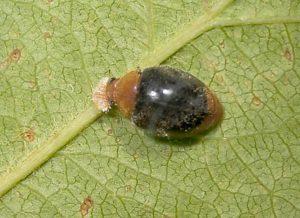By Matt Milkovich

How do you keep natural enemies — the beneficial insects and other arthropods that prey on crop-damaging pests — in the orchard? Leave them alone.
In other words, don’t let your orchard floor management and weed control practices drive away your allies in your war against pests, said Rebecca Schmidt-Jeffris, a research entomologist with the U.S. Department of Agriculture’s Agricultural Research Service branch in Washington state. She discussed natural enemies and how to preserve them during the Great Lakes Fruit, Vegetable and Farm Market EXPO in Michigan in December.
Schmidt-Jeffris stressed the importance of maintaining “connectivity” between trees and row middles in an orchard. Growers want the earwigs, lacewings, ladybugs, beetles, mites, spiders and other beneficials to move from their ground habitat up into the tree canopy, where they can prey on fruit-damaging pests. But herbicide strips and sprays and other management practices can disrupt the connection, she said.

Mowing, for example, can be a “big disturbance,” destroying beneficials’ groundcover and habitat and causing them to die or leave the orchard. Keep more grass near the trunks, Schmidt-Jeffris said.
Overzealous weed control can be another disturbance. Some herbicides are toxic to insects, increasing mortality and decreasing longevity, reproduction, predation and other aspects of their biology, she said.
“Just because they’re supposed to only kill plants doesn’t mean they don’t have effects on beneficial insects,” she said.
Weeds can serve as a source of pollen and nectar for beneficials. Relax your weed management regime, especially within herbicide strips, to give beneficials more food and easier movement between ground and tree canopy.
“When we’re doing various things to control weeds, we need to think about how it might impact natural enemies,” she said. “Herbicide strips directly underneath trees are difficult terrain for some of these very small arthropods to cross. They’re not able to move easily from ground cover up into the tree where we want them, eating pests.”
Schmidt-Jeffris conducted a two-year project in a Washington research orchard to measure the effects of various orchard floor management practices on natural enemy movement between ground and canopy. In one treatment in the orchard (which contained older, freestanding trees), they hand-weeded to keep the herbicide strip clean. In another, they used wood chips as mulch. In a third treatment, they planted buckwheat. The mulch, and in some cases hand-weeding, caused a disconnect between ground cover and canopy for predatory spiders, she said.
In other studies, Schmidt-Jeffris found that predatory insects and mites were sensitive to herbicides, but predatory spiders were not.
“Spiders were pretty tough,” she said. “Very little killed them.”








Leave A Comment